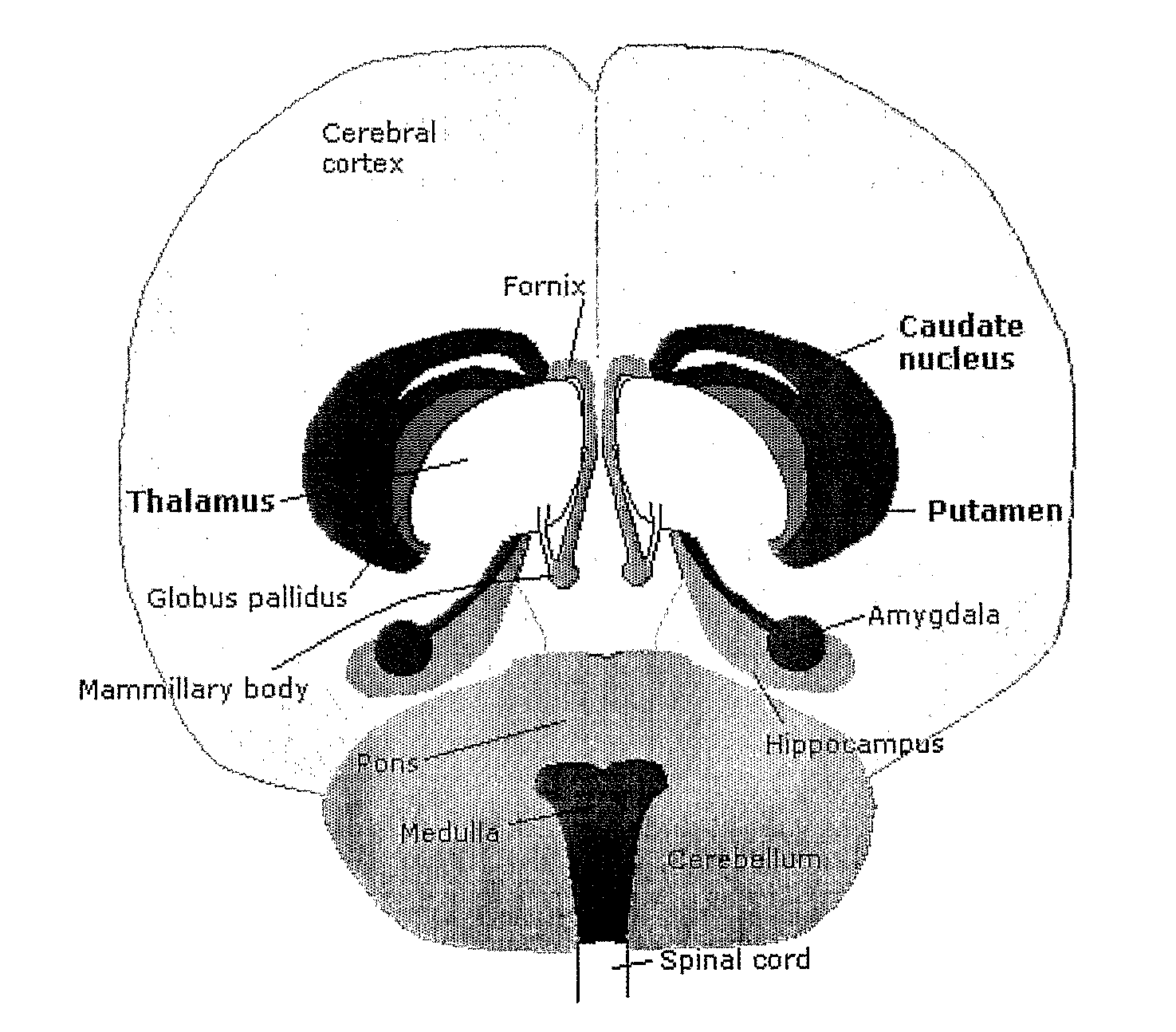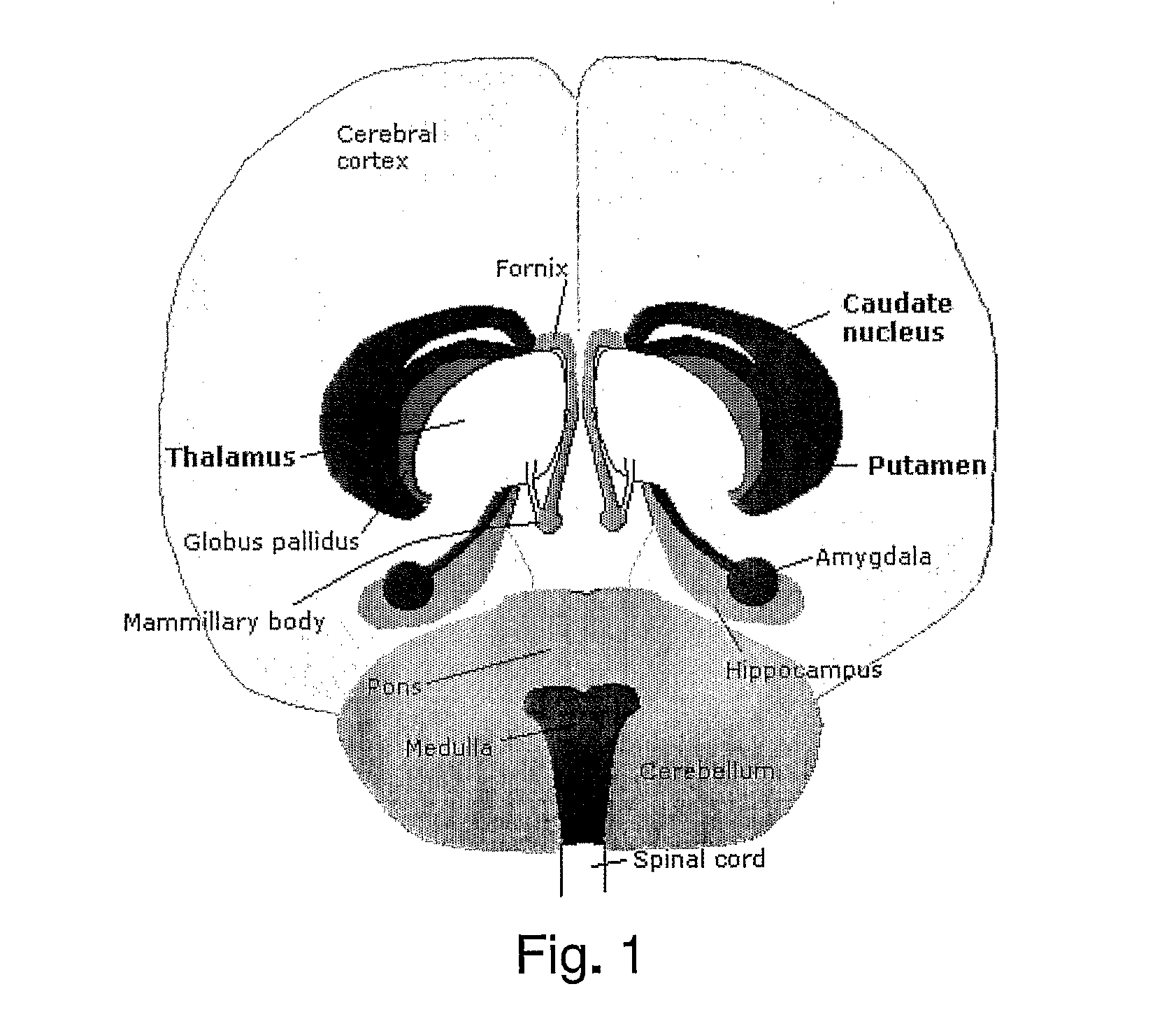System and method for volumetric analysis of medical images
- Summary
- Abstract
- Description
- Claims
- Application Information
AI Technical Summary
Benefits of technology
Problems solved by technology
Method used
Image
Examples
example
[0092]Below is provided an example of the procedure for brain structure model-based segmentation and statistical characterisation in the form of a confidence interval based on a reference model.[0093]1. A reference model is initially created, wherein the structures of interest are segmented and measured.[0094]2. A formula is calculated using the demographic and / or individual data, such as sex (gender), age, height, weight, genotype, ethnicity, habits, handedness, cognitive measures and the like, of the persons included in the model, and returns a confidence interval of the volume of the structures of interest.[0095]3. Finally, a patient's 3D image is provided as input to the system, with the patient's demographic and / or individual data, and the system returns a 3D image of the structure(s) of interest, the volume(s), and confidence interval.[0096]4. The 3D image of the segmented structure can be coloured reflecting the movement applied to the structure(s) of interest to make it rese...
PUM
 Login to View More
Login to View More Abstract
Description
Claims
Application Information
 Login to View More
Login to View More - R&D
- Intellectual Property
- Life Sciences
- Materials
- Tech Scout
- Unparalleled Data Quality
- Higher Quality Content
- 60% Fewer Hallucinations
Browse by: Latest US Patents, China's latest patents, Technical Efficacy Thesaurus, Application Domain, Technology Topic, Popular Technical Reports.
© 2025 PatSnap. All rights reserved.Legal|Privacy policy|Modern Slavery Act Transparency Statement|Sitemap|About US| Contact US: help@patsnap.com



